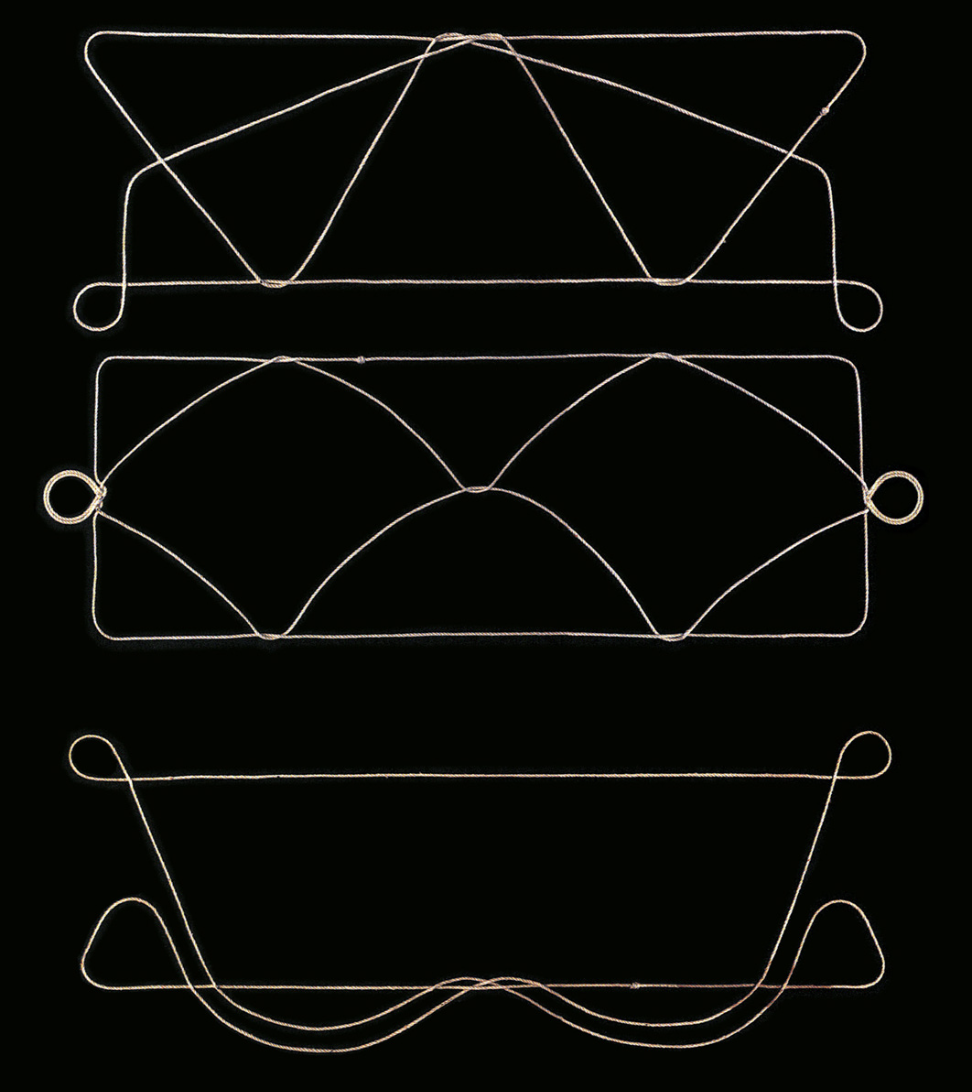String Figures

From String Figures: The Collections of Harry Smith: Catalogue Raisonné, Volume II (New York: J&L Books/Anthology Film Archives, 2015).
ARC3018HF
Fall 2024 Thesis Seminar
Instructor: Jeannie Kim
Meeting Section: L0101
Thursdays 2:00-5:00 p.m.
The approach to this semester is to conduct the seminar as a program of independent research – inquiry, documentation, and analysis – that will define the parameters of the thesis project to be carried out in the subsequent term. Through a series of admittedly prescriptive exercises, we will work together as a group to develop the specific intention, substance, argument, context, and program of the thesis project.
We begin, then, with string.
A modest and tactile material, string can define a musical scale, propel objects at lethal speed, and simultaneously describe a line and a plane. String has been used to delineate religious space, perform accounting, and describe narratives. In physics, while neither proven nor disproven, string theory explains how objects propagate through space and interact with each other, a claim that is arguably inextricably linked to our discipline. Whether enlisted as an eruv to create a private enclosure during the Sabbath or tied repeatedly as a process of recording in quipu, string figures are about giving and receiving, relaying connections, and telling stories. String figures – as Donna Haraway, Harry Smith, and others have observed – are acts of thinking and making that sit in relation with others. Through acts of holding still and passing on, string figures create space and conjugate worlds that are partial rather than universal; site responsive rather than site specific; deliberately impermanent and collaborative.
How can architecture conjugate worlds and leave space for malleable forms of encounter, whether it takes the form of a house, lab, field, office, prison, hospital, stadium, barn, slaughterhouse, farm, factory, park, or street? In Ursula LeGuin’s 1986 essay, “The Carrier Bag Theory of Fiction,” she posits a shift in the narrative of humanity from one of domination to one of entangled gathering, holding, and sharing. How can architecture similarly be reimagined as a holder, a recipient, a carrier bag with room for more? As LeGuin writes: “Still there are seeds to be gathered, and room in the bag full of stars.”

